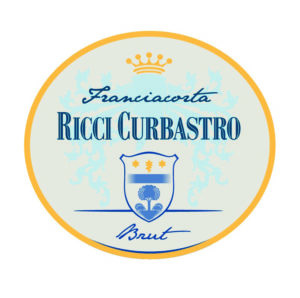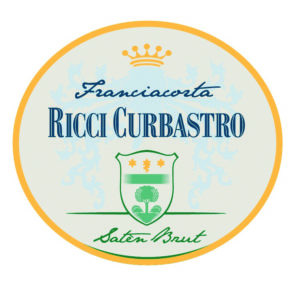The Curbastro family goes back to the thirteenth century – Riccardo Curbastro’s sons, Gualberto and Filippo, are the 18th generation. Many workers at the winery are the 3rd or 4th generation.
The farming heritage is well represented in the wine museum they opened in 1986. They run agricultural estates in Lugo di Romagna (Ravenna), Rontana di Brisighella (Ravenna), and the homonymous farm estate in Capriolo (Brescia, Franciacorta). Riccardo’s father was among the 11 founders of the Appellation Franciacorta in 1967, and Riccardo was the President of the Consorzio Vini Franciacorta when they achieved DOCG status in 1995. Since 1998, he also is the President of Federdoc, the interprofessional organization for wine denominations of origin in Italy. The labels feature the family’s coat of arms, with 2 hedgehogs (ricci in Italian) around an oak tree (Curbastro in Italian) .
The domaine in Capriolo (about 50 minutes east of Milan) spreads over 32 hectares, of which 27.5ha are planted according to the strict guidelines of the Consorzio. The underground cellar is built under the main house, Villa Evelina. Vinification is controlled by enologists Annalisa Massetti and Riccardo Curbastro. Filippo Ricci Curbastro joined in December 2020.
Farming/sustainability practices: certified organic since 2018, after practicing Low Impact Farming since 1992. In the 1970’s, at around age 15, Riccardo read “Silent Spring” by Rachel Carson. His father was already trying to take care of the land for the next generation. Inspired by the book, they decided to stop using herbicides in 1980, decades before anyone else was doing the same. In 1986, Riccardo installed a weather station to better prepare for different circumstances in a sustainable manner. Also concerned about the use of copper sulfite in organic viticulture, he planted a vineyard with a hybrid resistant to fungal diseases, in which he is experimenting zero treatment. He otherwise uses many different clones of each of his grape varieties, to increase genetic diversity and flexibility in the winery. It is not about finding the perfect clone, but creating an average of many different clones.
Regarding the vinification, he has used since the 90s a different recipe for the liqueur d’expédition. It is wine, sugar and yeast extract. It started as an effort to reduce the amount of SO2 (he uses a low level, 30% of the average usage in the area). He found supplementary benefits, however. The high amino acid content of the yeast extract has a lot of antioxidants and enriches the structure. He also found it dramatically extended the shelf life of the wine after disgorgement.
The winery is Carbon Footprint certified since 2012. For electricity, it is completely self-sufficient, using solar cells, LED lamps, etc. The winery is a certified B-corporation.

-
Ricci Curbastro
Franciacorta Brut
-
Ricci Curbastro
Franciacorta Satèn Brut


